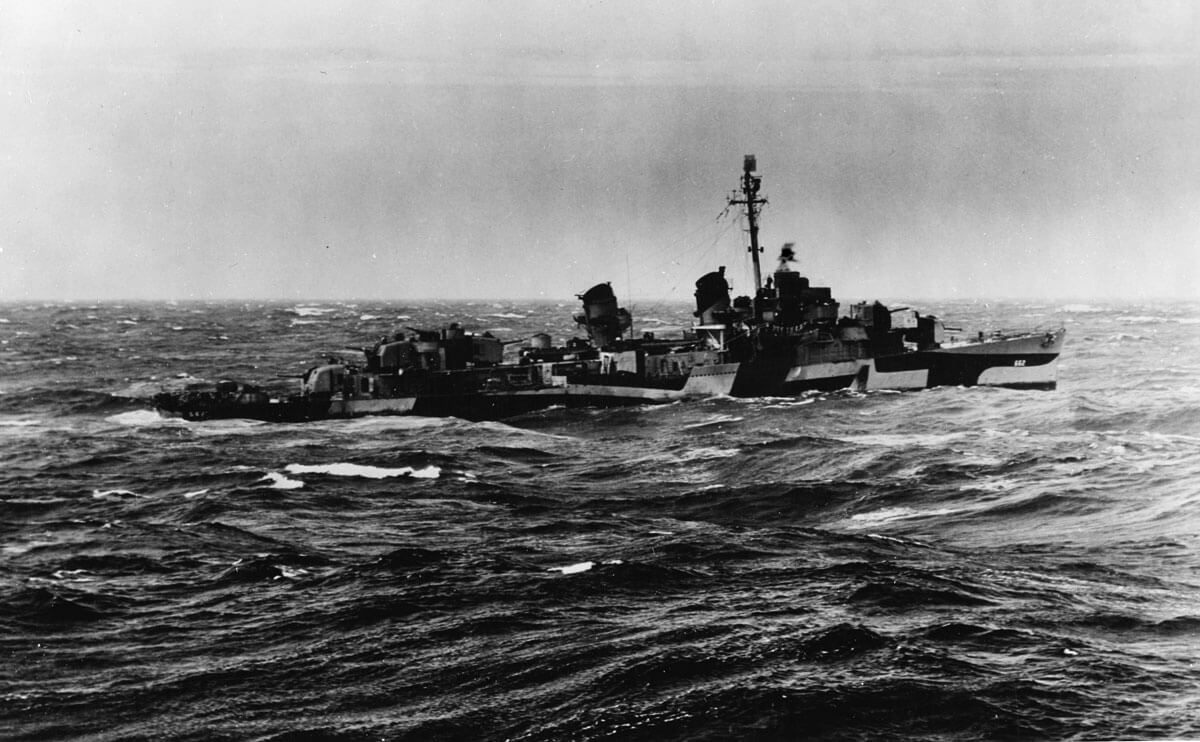Asbestos Exposure on the USS Bennion

Hull Number: DD-662
Type: Destroyer
Class: Fletcher
Built: Boston, MA
This Fletcher-class Destroyer was constructed by the Boston Navy Yard of Boston, MA toward the end of World War II. It was commissioned by the U.S. Navy in December of 1943, and was assigned to the Navy’s Pacific Fleet. Measuring 376 feet from bow to stern, the Bennion carried a complement of 329 officers and enlisted men.
The ship earned eight battle stars for its missions in the Pacific, including the Leyte operation, the Iwo Jima operation, and the Okinawa Gunto Operation, for which it earned a Presidential Unit Citation for exceptional bravery against the enemy. The vessel was decommissioned shortly after the end of the war, in June 1946, and was struck from the Naval Vessel Register in April of 1971.
Navy veterans who served aboard the Bennion were likely exposed to asbestos over the course of normal duty. U.S. Navy ships built prior to the mid-1970’s often used asbestos in much of the equipment carried on board, including boilers, turbines, pumps, valves, and electrical components.
Materials used in ship’s propulsion and boiler systems, such as packing and gaskets, were also made of asbestos, putting veterans who worked in boiler and engine spaces in daily contact with airborne asbestos dust.
The companies who made these asbestos products never warned veterans of the health hazards asbestos posed, nor of the safety precautions needed to handle the substance. As a result, many Navy men fell victim to mesothelioma and other asbestos-caused illnesses.
Victims of asbestos have a right to seek compensation for their illness. Settlements can often cover the staggering costs of medical treatment, and potentially provide additional sums for the pain and suffering of victims and their families. Due to statutes of limitations imposed on legal action, counsel should be sought soon after receiving a mesothelioma diagnosis.
